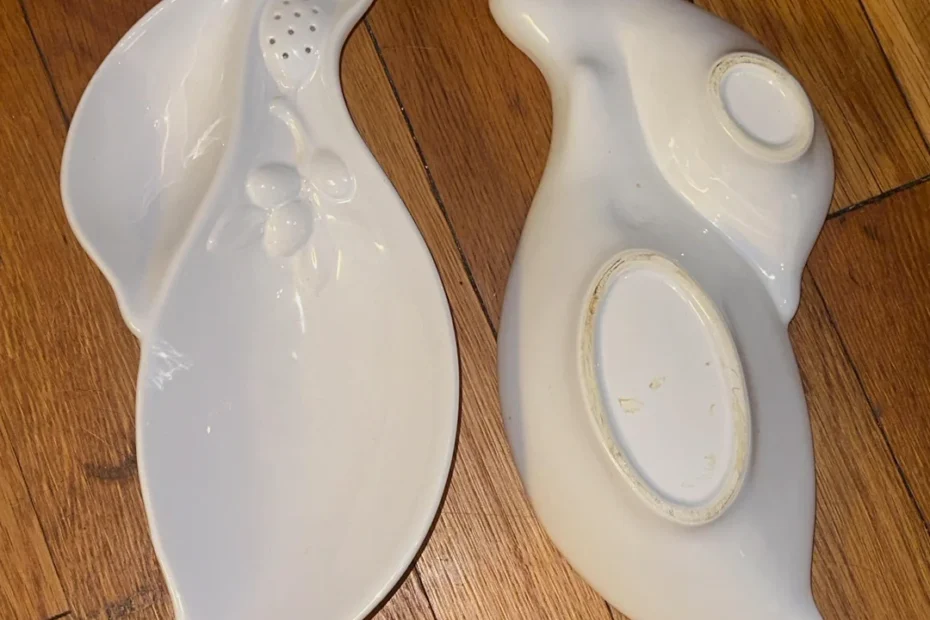I purchased them used in a set of two, but they’re identical and not inverses the way one may expect from yin-yang-style pieces that are meant to fit together. The previous owner was located in the area of Ohio where vintage pieces from the glass boom era are common; most frequently brands like Anchor Hocking, Hazel-Atlas, Libbey, etc., but these pieces have no maker’s marks.

HERE ARE SOME OF THE PEOPLE’S OPINION:
Someone said:
It’s for olives. Whole olives put on the large part. Pips after eating put on the small part. Holes for cocktail sticks.
Very fancy.
Someone said:
Hors d’oeuvres dish? The holes are for toothpicks or small skewers. Maybe????
Someone said:
It’s an olive dish. Olives in the big section, pits get put in the little section, and toothpicks in the little holes.
Someone said:
It’s an olive serving dish. The toothpicks go into the holes. The large side is for the olives, and the small side is for the pits. Ours had fancy-schmancy picks that you’d keep on your little plate and use on the other hors d’oeuvres being served before a meal.
Someone said:
My grandma called dishes like those relish trays. She said they were divided like that so you could put different types of pickles or olives out without them mixing which could spoil the taste. I guess we weren’t fancy enough to just have one per type with space for pits.
Someone said:
The image of the three olives is a hint.
Someone said:
oh i kinda want them now they would be fun with a big charcuterie situation.
Someone said:
Olive trays I have have the same ones I bought years ago. The holes are for toothpicks.
Someone said:
I thought these were measuring devices. Large for tablespoon, smaller portion teaspoon and the area with the holes would be a pinch. I was totally wrong!
Someone said:
Olive dishes.
Put the pits in the small part
Someone said:
This dish olived to see another day!
Someone said:
Olive stones hence the name removing them is to stone olives
Someone said:
Am I the only one who initially thought these were some goofy insoles at first glance?
Someone said:
It’s a Chip ‘n’ Dip. You put chips in the large area,
and dip small section. For entertaining. It’s a beaut.

